AMD Entry-level PC
A year ago our entry AMD was single-core, last December 40% less money bought a 2.6GHz dual-core system, and today's AMD entry system uses a Black Edition unlocked 2.7GHz dual-core that costs a few dollars less than our choice just three months ago. That is certainly increased value in an economy that forces most buyers to look closely at price. With memory so cheap we have continued our recommendation of 4GB at a kit price of just $37. You can go with 2GB and save $18, but that money is well spent in doubling memory. The hard drive remains at 500GB.
| AMD Entry-level PC | ||
| Hardware | Component | Price |
| Processor | Athlon 64 X2 7750 Kuma 2.7GHz Black Edition (2.7GHzx2 95W 2x512KB L2) |
$60 |
| Cooling | CPU Retail HSF | $- |
| Video | On-Board | $- |
| Motherboard | ASRock A780GXE/128M 780G | $80 |
| Memory | G.Skill 4GB (2x2GB) DDR2-800 | $37 |
| Hard Drive | WD Caviar GP WD5000AACS 500GB | $60 |
| Optical Drive | Samsung 22X DVDRW/DL SH-S223Q | $25 |
| Audio | On-Board | $- |
| Case | SIGMA La Vie ABWBP Black Aluminum/ SECC ATX Mid Tower with 500W Power Supply | $60 |
| Power Supply | Included with Case | $- |
| Base System Total | $322 | |
| Display | Hanns-G HB-175APB Black 17" 8ms Widescreen LCD Monitor Built in Speakers - Retail (1440x900) | $99 |
| Speakers | Built into Monitor | $- |
| Input | Microsoft CA9-00001 Black PS/2 Standard Keyboard and Optical USB/PS2 Mouse - OEM | $16 |
| Operating System | Microsoft Vista Home Premium OEM | $99 |
| Complete System Bottom Line | $536 | |
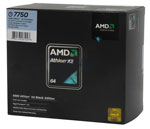 |
Prices on all processors are continuing to drop in the face of the aggressive pricing strategy adopted by Intel in entry to upper midrange processors. The $60 AMD 2.7GHz dual-core is a faster CPU at a slightly lower price than our December guide. Not only is it faster but it's also a Black Edition (unlocked) CPU. Most have been easily running at 3.0GHz just by increasing the multiplier. If you want even more power the Phenom 8750 triple-core Black Edition is a good value for just $44 more ($104). However, for most users the Athlon 64 X2 7750 provides plenty of power for an entry system. If you're counting pennies you could drop down to a single-core 2.6GHz Orleans 45W processor for $42 and save $18.
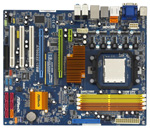 |
The 780G chipset is one of the best budget IGP designs we have worked with over the years. This is the chipset that made integrated graphics relevant again. One of the best boards in this price category is the ASRock A780GXE. The A780GXE features AMD/ATI Radeon 3200 integrated graphics. ASRock loads the board with six 3Gb/s SATA ports featuring RAID 0/1/10, 5.1 HD Audio, Gigabit LAN, two PCI-E x16 slots, one PCI-E x1 slot, three PCI slots, and support for 16GB of memory. Durability is addressed with solid capacitors for CPU power and duracap long-life capacitors for the rest. This board has been rock solid for us and supports AM2/AM2+ and the newest AM3 CPUs. The A780GXE has 128MB of sideport memory for additional performance. It fully supports the 140W Phenoms, and it can do dual x8 CrossFire. The A780GXE used to be a $100 board, so it is a good value at the current $80 price. It is ATX format, and ASRock also manufactures the A780FullHD motherboard, which at $57 may be a better choice for those pinching pennies. However, the extra performance of sideport memory and the better chipset for the $23 price difference is worth it in our opinion.
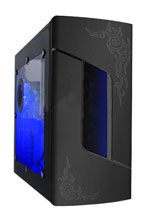 |
The case and power supply are the Sigma 500W La Vie mid-tower. This case and power supply are currently on sale after a $25 rebate for $40. Sigma makes both decent cases and decent power supplies that are sold separately. While no one will mistake this case/PSU combo for one of the premium Sigma offerings, it is still good quality and good value for a very reasonable price. Even if you pay the regular price of $60 to $65 you will get good value in this combo. We have built several entry systems with the Sigma case and PSU and had good results and stable performance. The only caveat is to check out the case when it arrives as shipping can take its toll on the case front door.
If you prefer a smaller case to mate with your Micro ATX motherboard the HEC 6K28BSOH48D Micro ATX mini-tower used in the Intel entry system is a good choice. It is a solid small case with a power supply from HEC, which is one of the world's best PSU makers. You should generally go for the best case and power supply you can reasonably afford, so you should also look at the cases and power supplies recommended for more expensive systems if you plan to keep your case/PSU and merely upgrade other components in the future.
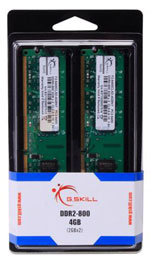 |
With DDR2 prices so very low, we went for 4GB of DDR2-800 this time. This is double last year's entry recommendation for less than half the price. This 50% to 75% drop in DDR2-800 memory prices in the past year is why you're not seeing much memory advertising these days. RAM prices as a whole are certainly in the commodity category as of late. We recommended the G.Skill 4GB DDR2-800 CAS 5 kit, but you could just as easily choose OCZ, Kingston, Corsair, Crucial, Geil, Patriot, A-Data or any other quality DDR2-800 name and shop for the memory based on a combination of price and the company's support reputation. Again, if you are truly pinching pennies you can save about $18 by going with a 2GB DDR2-800 kit instead at $19 to $20.
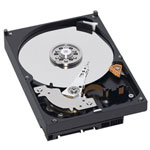 |
Hard drive capacity continues to grow, as you can see in our selection of the Western Digital Caviar 500GB for our entry system. It seems a waste to choose a lower HD capacity when 500GB is now available for around $60 - even from www.amazon.com. While there are differences between hard drives, outside of running benchmarks most people aren't likely to notice the difference in performance between Western Digital, Seagate, Samsung, Hitachi and other major brands. All are worthy of consideration if the price per gigabyte (or terabyte) is right.
 |
For the optical drive we went for value with the dependable Samsung 22X DVD. With the rise of the 25GB/50GB Blu-ray burners, DVD writers have continued to drop in price. A DVD writer that supports double-layer and 22X DVD writes for $25 is a bargain indeed.
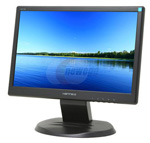 |
The last major component to discuss is the display, and here the tilt was toward price. $99 is a really low price for an LCD monitor, and the Hanns-G is a 17" widescreen that supports a native resolution of 1440x900. This is the resolution supported by most 19" and 20" widescreen monitors. You will not give up resolution with this monitor, but things will be a bit smaller.
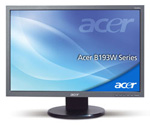 |
If your budget allows, you can choose the 19" Acer X193Wb with the same 1440x900 resolution at $120, or a 21.5" Viewsonic VX2233wm with true HD 1920x1080 resolution at $170. 21.5"/22" True HD is today's sweet spot, since the next step up to 23.6"/24" starts around $250. If your budget can stretch to $170, that is money well spent on a 21.5" 16:9 HD widescreen display.










66 Comments
View All Comments
pirspilane - Saturday, May 9, 2009 - link
I got the M3N78 motherboard, and the instructions recommend a max of 3 Gb of RAM using Vista 32-bit.Are you using Vista 64-bit?
If you're using 32-bit Vista, does the system utilize the additional Gb of RAM?
Or maybe dual-channel memory doubles the amount of memory Vista can address?
Does anybody know?
rokstomp - Tuesday, March 31, 2009 - link
I am looking at doing my first ever build and was extremely pleased to stumble across this guide. Since I'm new at this I've only got a fair amount of research and no practice, so I apologize if this is a dumb question.I noticed that the AMD Phenom II X3 710 requires an AM3 socket, but the ASUS M3N78-EM is AM2/AM2+. Is there a compatibility issue?
I just wanted to double-check everything before buying. Like I said, I'm a build n00b.
swamytk - Monday, June 15, 2009 - link
I too had doubt on this. Then understood that AM3 processors are compatible with AM2+ sockets, but not vice-versa.Then AMD clarified this with the following link.
http://support.amd.com/us/kbarticles/Pages/CPU-6-s...">http://support.amd.com/us/kbarticles/Pa...lus-phen...
yanman - Thursday, March 26, 2009 - link
We do! Please spare a thought for your many non-US readers. Us Aussies along with our Euro brethren on DVB-T standard still rely on card or USB TV-tuners.eyeguy - Saturday, March 21, 2009 - link
anyone have ideas for a windows home server box? Something low power but not as future limited by memory and slots.Shadowmaster625 - Friday, March 20, 2009 - link
I can go on ebay and buy any old athlon X2 computer with 2 gigs of RAM and then go to newegg and buy a monitor and an ocz vertex 30GB, and have a computer that is faster than all of those computers for under $500. In fact I just bought an old P4 2.8 system for $50 and I bet its faster than all those computers once the SSD is installed.strikeback03 - Monday, March 23, 2009 - link
Faster at what? Boot/application launch possibly, though I wouldn't bet too strongly on it. Obviously at anything that actually uses the CPU 3 Phenom cores at 2.8GHz or 2 Penryn cores at 2.93GHz are going to be faster than 1 P4 core at 2.8GHz.Proteusza - Tuesday, March 17, 2009 - link
Everyone and their uncle has a build that they think is way better, its been 2 months and the prices have changed OH NOES redo the entire article.If you think really your dream machine is so great, then go build it. AT guides are just that - guides. Use them, dont use them, its up to you. I look at them as more of a "what can I get for my money" type article than "buy these exact parts" article.
v12v12 - Wednesday, March 18, 2009 - link
I agree most of these posts are the nerds-nit-pick special! I'm sorry but if you're whining about $15 here and $20, get a clue and get a REAL JOB or start saving/studying for certs/school and make some real money.This shoe-string budget crap, for a so-called "gamer" box is plain stupidity. If you're hurting over $600-800 MAX limit, sounds like you have your financial PRIORITIES out of whack! Nobody is "gaming" for long with a $600 box. It's a fool's investment and will have you stuck with a sub-par performing machine, rapidly. Oh and don't even think about resale, you're stuck with the low-end junk.
While mirroring the car market: UPSCALE cars/PC builds lose a small percentage of value as soon as you buy them, BUT they hold top value over the coming months Vs this low-mid-level junk that immediately loses an chance of resale value. Have you seen how many stupid people are on Ebay that overbid even for those relic 8800s?!
Who's going to buy your used, non-warranted (many manu's do require proof of purchase these days) 2nd rate card for ~$30 less than RETAIL? Pawning that off to ebay noobs is your only hope to recoupe your losses. Be smart people.
If you're maxing out around $600 = STOP and rethink your finances... $800? Might as well save and get an Icore. Geesh, oh and don't forget about TAXES + initial cost of hardware lol. Not to mention if something goes wrong and you have to RMA = how you gonna afford S/H if you can barely afford a paltry $600-800?
Flame time...
v12v12 - Wednesday, March 18, 2009 - link
Damn this stupid comment board, always 2x posting. No editing...?